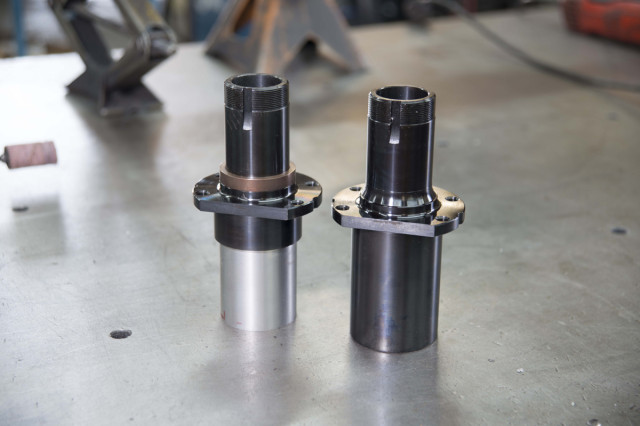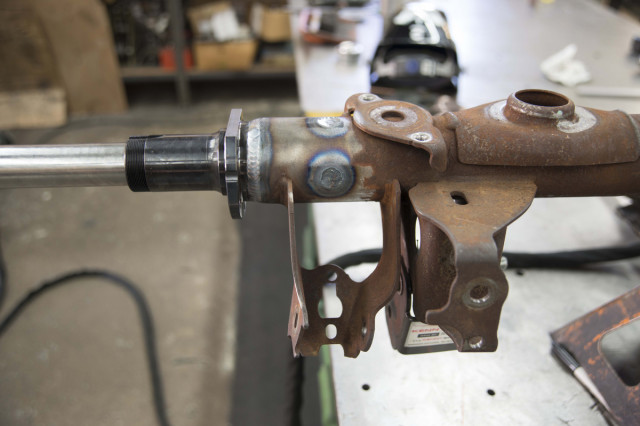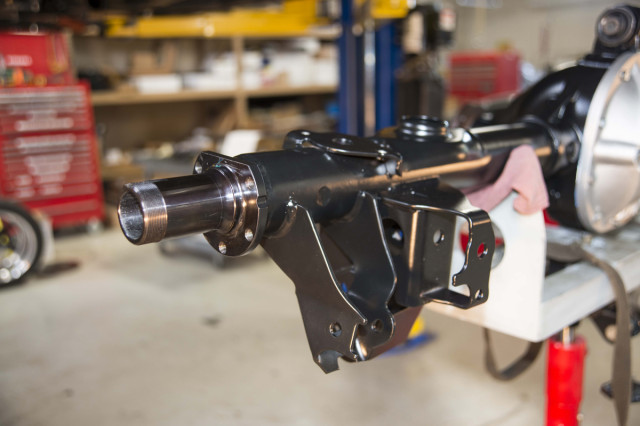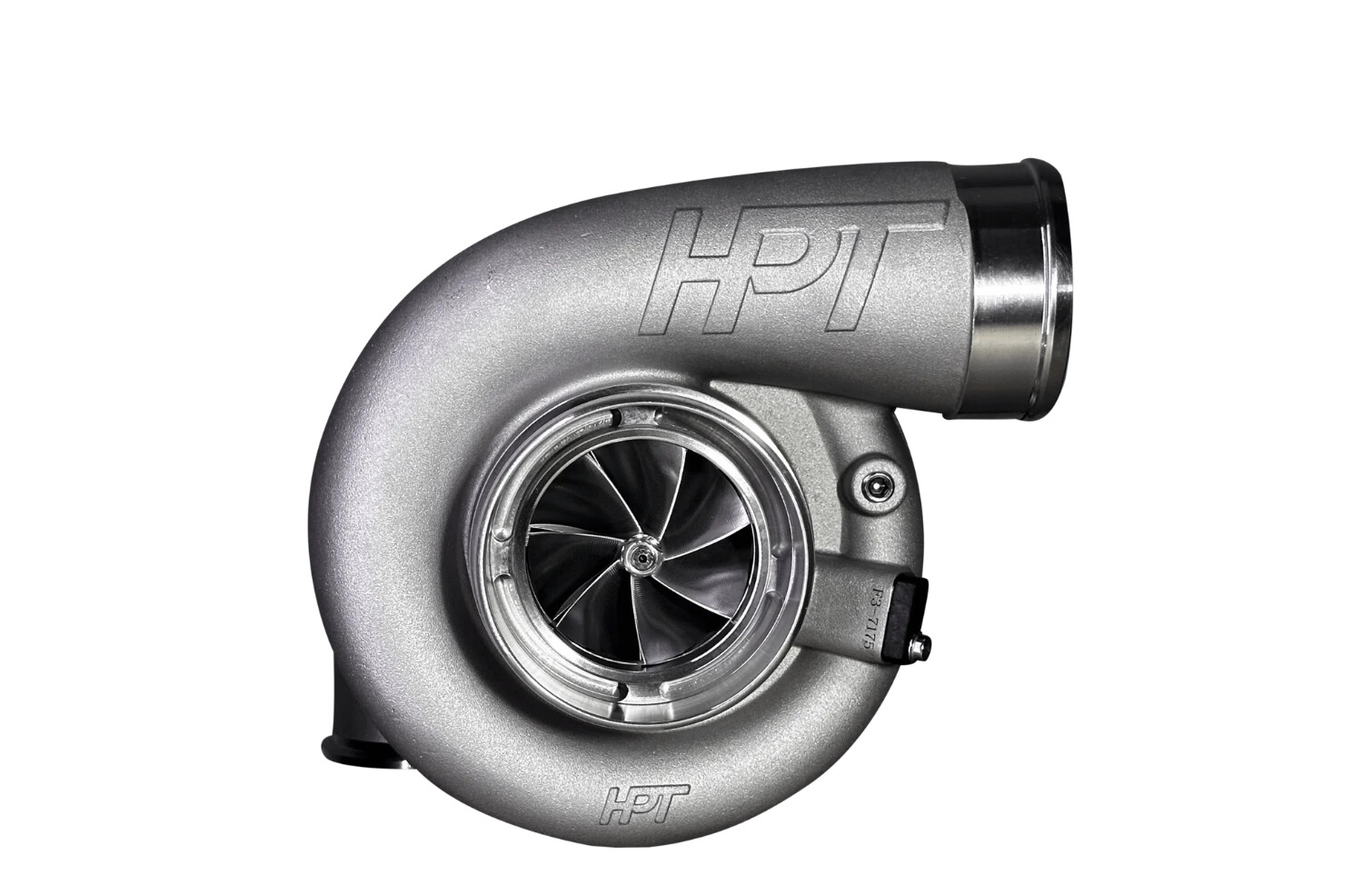We know you’re reading the title to this article and thinking “are they out of their minds? Floater axle setups are for drag cars and this is a V6!”

The Strange Engineering steel spindles. Photo Credits: Glenn Cope, V6 Mustang Performance
Well, that’s not entirely true. For example, many diesel 3/4-ton and 1-ton trucks use floating axle setups for their stability and strength, and a floating-style axle setup can be used for just about any performance car using a solid rear axle. Glenn Cope of V6 Mustang Performance does a fair bit of open-track racing at courses like Road America, and as such was concerned about performance of the driveline in the cornering area.
The area where a full-floating axle setup is altered from a traditional flanged axle is at the end. The rearend housing is shortened and a set of steel spindles is welded to the end with a jig, to give the new floater axle outer-end support.
The new axles are stub shafts with splines at each end – one end for the differential and the other end that slides into the outboard hub – and are only responsible for handling torque application in the forward plane. The rest of the dynamic forces are handled by the axle housing and new welded spindles, greatly reducing flex and prolonging component life of the housing internals.
There are other gains found by using the floater design – it takes the rolling resistance off the axle bearings and places the load onto the rearend housing itself. By removing those stresses from the axles there are other gains to be found in a road racing application.
Glenn does a good job of detailing the benefits of floater technology in a road racing application here in a practical review of the parts on the track. Our sister site, Dragzine, also did a full-on roundup of drag racing floating axle technology in an excellent read by Editor Andrew Wolf if you’re interested in learning more about it.
It’s a unique way to tackle driveline upgrades, and isn’t for everyone, but if you’re doing a lot of road racing or autocrossing, this system will provide the ultimate in strength for an 8.8 in those situations. Regardless, check out the video – it’s cool stuff.
Thanks for sharing your upgrades with us, Glenn! Head on over to this link to check out the complete buildup sequence.
For more information on the complete line of Strange Engineering products, check out their website.


















